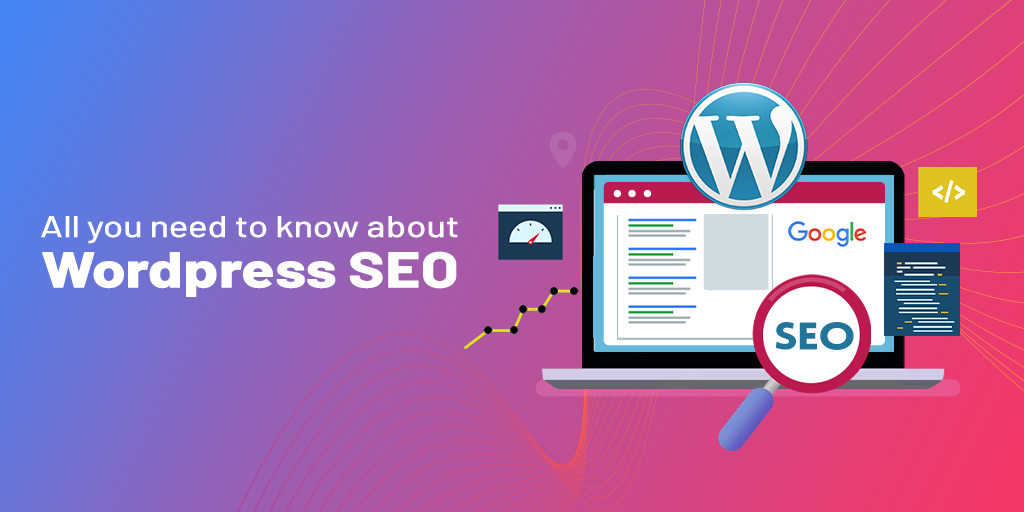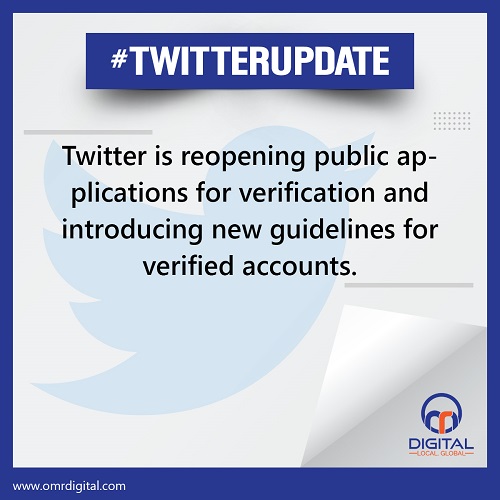
Contact Us
Related Posts
Category
Owning a website involves a lot of SEO. One of the best methods to drive traffic is to get found on search engines like Google. Traffic can help your business grow by generating page views for adverts, boosting sales, and more.
We’ll discuss some of WordPress SEO strategies for making your website search engine friendly.
Why WordPress SEO Matters and What It Is?
SEO involves making sure that visitors can find your website when they use a search engine. Remember that search engines are becoming more intelligent every day, therefore utilising “hacks” or hostile techniques should be avoided. If someone searches for the content you’re producing, your main assumption should be that it will provide all of the information they need to understand the subject.
WordPress SEO: A Quick Overview
Let’s now explore all of the WordPress SEO tips.
WordPress comes with a default setting that allows you to prevent search engines from crawling your website. The “noindex” tag is used for this; it’s probable that your site already disables this function, but it’s important to check. The Settings / Reading page of your WordPress dashboard contains this option.
Make sure that this setting is not selected. This lets us know that your website’s “noindex” setting is not active.
Join Google Search Console for Your Website
Since Google is the most popular search engine, you should ensure that it has indexed your website. By utilising Google Search Console, this is quite simple. Add a site after creating an account on Google Search Console with your Google account. You can add a “property” once you’ve signed up and logged in.
After adding a site, you will need to confirm that it belongs to you.
There are two methods to do this:
Domain: If you are familiar with changing DNS settings, using this method to add your property to Search Console is advised. To add a TXT record, edit the DNS settings for your domain.
URL prefix: For the majority of websites, using the URL prefix option is appropriate because it only verifies one subdomain of your site (for instance, www. or no subdomain). There are a few ways to verify the URL prefix approach, but using the meta tag option is the simplest. The majority of SEO plugins feature a meta tag verification Google Search Console option on their settings page.
Sitemap to Google Search Console Addition
WordPress 5.5 introduced a built-in method to create sitemaps. The best part is that using it requires no additional effort from you. If you are using an SEO plugin, simply navigate to yoursite.com/wp-sitemap.xml; in either case, this should be a legitimate sitemap URL on your website.
Try yoursite.com/sitemap.xml or yoursite.com/sitemap_index.xml if yoursite.com/wp-sitemap.xml does not take you to your XML sitemap.
You can now upload your sitemap URL to Google Search Console because you have it.
This essentially provides Google with a list of all the pages on your website, allowing it to locate all of the material. This is crucial because when new information is published, Google can instantly find it.
Verify the Permalink Settings
By incorporating SEO-friendly permalinks, WordPress performs a terrific job. The URLs listed here are used to access the content on your website. By heading to Settings / Permalinks in the admin panel of WordPress, you can access the permalink settings. Verify again if these are configured properly on your website.
Simply setting “Post name” as the permalink in WordPress is what is advised. In place of the date or category, this will use the name of your post as the slug.
How do Permalinks Work?
A permalink is a link that reflects a published page on your website and is also referred to as a “permanent link”. Instead of something like “mysite.com/?page_id=295”, an SEO-friendly url would be “mysite.com/about-me”. By doing this, you can change your “about-me” page and include a permanent link to it that points to its URL.
Tips for WordPress On-Page SEO
Put a WordPress SEO plugin in place. There are several WordPress SEO plugins available, and they all perform similarly. Some of the more well-liked ones include Yoast SEO, RankMath, All in One SEO, and The SEO Framework.
Yoast SEO is by far the most well-liked, and many usually use it.
Find Topics and Keywords to Write About
The subject of your writing is undoubtedly one of the most crucial elements of SEO. Your website should focus on one theme or issue rather than being dispersed throughout. However, your topic can be broad and include a variety of ideas.
There are several programmes available to generate ideas for your topic, but keyword research tools are suggested.
You can view information for a phrase such as volume and difficulty by using the explorer tab. People can undoubtedly enter their queries in a variety of ways, but the suggestions will provide a helpful direction. Volume is the average monthly searches for the term, whereas difficulty represents how challenging it will be to rank for the term.
Some excellent paid SEO keyword research tools include the following-
- Ahrefs SEMrush
- Moz
Create Content Intended for Searchers
It’s time to start creating content now that you have a theme in mind and some ideas for articles. It’s critical to consider the keywords that users will use to locate your post. This is a crucial attitude to have while posting content to your website. The URL, blog post title, and content are just a few examples of things that will play a role in answering a searcher’s query.
Use Meta Descriptions and Titles
You’ll be able to edit the meta title and description once you’ve installed an SEO plugin on your WordPress website. Search engines make extensive use of the meta title and description, which can have a negative impact on your overall ranking. Even though Google’s search engine results pages (SERPs) occasionally generate descriptions automatically, it’s still crucial to enter an accurate description for your page.
Meta Title: Your page’s meta title should include no more than 55 characters and should adequately represent the page. Making your meta title intriguing is vital since it appears so frequently in search engine results.
Meta description: A meta description is a short overview of your page that search engines can read in the head tag of your website. The ideal length for meta descriptions is between 50 and 160 characters.
The title of your post will automatically be used as your meta title. If your post title accurately describes the page, then most of the time this is OK. You can replace your meta title with something more intriguing and inclusive of the content if the title of your article isn’t descriptive.
Utilise Internal Linking
Links to other pages on your website are referred to as internal links. It’s a good idea to go back and add links to older articles if you publish a new article that is related to the previous topics you talk about. This will assist consumers explore your website’s information simply and demonstrate to Google how knowledgeable your site is on a certain subject.
Update Your Posts Frequently
You should make sure the material in your articles is current and pertinent. With new knowledge and methodologies, information in the majority of niches will change over time. Someone else will update your content instead of you, and they will rank better in Google.
Make sure that your material is original and offers value for the reader to produce high-quality content.
Low-quality material blunders that are frequent include-
- Unoriginal Content: Copying or plagiarising content from other websites will have a negative impact on your SEO rankings.
- Grammar Mistakes: Google will view grammar mistakes as poor writing.
- Too Complex Writing: You should aim for a reading level appropriate for the fifth grade if the subject you are writing about can be handled there. Writing that is difficult for the majority of readers to grasp will probably keep you from ranking well.
- Out-of-Date Information: Providing outdated information will be viewed as being of low quality.
- Too Much “Fluff”: It is not advisable to write material only to satisfy the word requirement because this will be detected.
- When creating content, it’s crucial to strike a balance between complexity and clarity. To keep your material engaging and fresh, experiment with sentence length and structure. Additionally, make sure the audience you’re trying to reach can easily read and understand the content.
Making good content that will rank highly on search engines and provide your visitors with useful information can be accomplished by avoiding the frequent errors mentioned above and attempting to strike a nice balance between difficult and easy.
Conclusion
Hope you found this primer on WordPress SEO useful. Thank you for reading the WordPress SEO tips. Keep in mind that SEO is a lengthy game; results never appear right away. Give your website’s updates and articles three to six months to reach their full potential.

Owning a website involves a lot of SEO. One of the best methods to drive traffic is to get found on search engines like Google. Traffic can help your business grow by generating page views for adverts, boosting sales, and more.
We’ll discuss some of WordPress SEO strategies for making your website search engine friendly.
Why WordPress SEO Matters and What It Is?
SEO involves making sure that visitors can find your website when they use a search engine. Remember that search engines are becoming more intelligent every day, therefore utilising “hacks” or hostile techniques should be avoided. If someone searches for the content you’re producing, your main assumption should be that it will provide all of the information they need to understand the subject.
WordPress SEO: A Quick Overview
Let’s now explore all of the WordPress SEO tips.
WordPress comes with a default setting that allows you to prevent search engines from crawling your website. The “noindex” tag is used for this; it’s probable that your site already disables this function, but it’s important to check. The Settings / Reading page of your WordPress dashboard contains this option.
Make sure that this setting is not selected. This lets us know that your website’s “noindex” setting is not active.
Join Google Search Console for Your Website
Since Google is the most popular search engine, you should ensure that it has indexed your website. By utilising Google Search Console, this is quite simple. Add a site after creating an account on Google Search Console with your Google account. You can add a “property” once you’ve signed up and logged in.
After adding a site, you will need to confirm that it belongs to you.
There are two methods to do this:
Domain: If you are familiar with changing DNS settings, using this method to add your property to Search Console is advised. To add a TXT record, edit the DNS settings for your domain.
URL prefix: For the majority of websites, using the URL prefix option is appropriate because it only verifies one subdomain of your site (for instance, www. or no subdomain). There are a few ways to verify the URL prefix approach, but using the meta tag option is the simplest. The majority of SEO plugins feature a meta tag verification Google Search Console option on their settings page.
Sitemap to Google Search Console Addition
WordPress 5.5 introduced a built-in method to create sitemaps. The best part is that using it requires no additional effort from you. If you are using an SEO plugin, simply navigate to yoursite.com/wp-sitemap.xml; in either case, this should be a legitimate sitemap URL on your website.
Try yoursite.com/sitemap.xml or yoursite.com/sitemap_index.xml if yoursite.com/wp-sitemap.xml does not take you to your XML sitemap.
You can now upload your sitemap URL to Google Search Console because you have it.
This essentially provides Google with a list of all the pages on your website, allowing it to locate all of the material. This is crucial because when new information is published, Google can instantly find it.
Verify the Permalink Settings
By incorporating SEO-friendly permalinks, WordPress performs a terrific job. The URLs listed here are used to access the content on your website. By heading to Settings / Permalinks in the admin panel of WordPress, you can access the permalink settings. Verify again if these are configured properly on your website.
Simply setting “Post name” as the permalink in WordPress is what is advised. In place of the date or category, this will use the name of your post as the slug.
How do Permalinks Work?
A permalink is a link that reflects a published page on your website and is also referred to as a “permanent link”. Instead of something like “mysite.com/?page_id=295”, an SEO-friendly url would be “mysite.com/about-me”. By doing this, you can change your “about-me” page and include a permanent link to it that points to its URL.
Tips for WordPress On-Page SEO
Put a WordPress SEO plugin in place. There are several WordPress SEO plugins available, and they all perform similarly. Some of the more well-liked ones include Yoast SEO, RankMath, All in One SEO, and The SEO Framework.
Yoast SEO is by far the most well-liked, and many usually use it.
Find Topics and Keywords to Write About
The subject of your writing is undoubtedly one of the most crucial elements of SEO. Your website should focus on one theme or issue rather than being dispersed throughout. However, your topic can be broad and include a variety of ideas.
There are several programmes available to generate ideas for your topic, but keyword research tools are suggested.
You can view information for a phrase such as volume and difficulty by using the explorer tab. People can undoubtedly enter their queries in a variety of ways, but the suggestions will provide a helpful direction. Volume is the average monthly searches for the term, whereas difficulty represents how challenging it will be to rank for the term.
Some excellent paid SEO keyword research tools include the following-
- Ahrefs SEMrush
- Moz
Create Content Intended for Searchers
It’s time to start creating content now that you have a theme in mind and some ideas for articles. It’s critical to consider the keywords that users will use to locate your post. This is a crucial attitude to have while posting content to your website. The URL, blog post title, and content are just a few examples of things that will play a role in answering a searcher’s query.
Use Meta Descriptions and Titles
You’ll be able to edit the meta title and description once you’ve installed an SEO plugin on your WordPress website. Search engines make extensive use of the meta title and description, which can have a negative impact on your overall ranking. Even though Google’s search engine results pages (SERPs) occasionally generate descriptions automatically, it’s still crucial to enter an accurate description for your page.
Meta Title: Your page’s meta title should include no more than 55 characters and should adequately represent the page. Making your meta title intriguing is vital since it appears so frequently in search engine results.
Meta description: A meta description is a short overview of your page that search engines can read in the head tag of your website. The ideal length for meta descriptions is between 50 and 160 characters.
The title of your post will automatically be used as your meta title. If your post title accurately describes the page, then most of the time this is OK. You can replace your meta title with something more intriguing and inclusive of the content if the title of your article isn’t descriptive.
Utilise Internal Linking
Links to other pages on your website are referred to as internal links. It’s a good idea to go back and add links to older articles if you publish a new article that is related to the previous topics you talk about. This will assist consumers explore your website’s information simply and demonstrate to Google how knowledgeable your site is on a certain subject.
Update Your Posts Frequently
You should make sure the material in your articles is current and pertinent. With new knowledge and methodologies, information in the majority of niches will change over time. Someone else will update your content instead of you, and they will rank better in Google.
Make sure that your material is original and offers value for the reader to produce high-quality content.
Low-quality material blunders that are frequent include-
- Unoriginal Content: Copying or plagiarising content from other websites will have a negative impact on your SEO rankings.
- Grammar Mistakes: Google will view grammar mistakes as poor writing.
- Too Complex Writing: You should aim for a reading level appropriate for the fifth grade if the subject you are writing about can be handled there. Writing that is difficult for the majority of readers to grasp will probably keep you from ranking well.
- Out-of-Date Information: Providing outdated information will be viewed as being of low quality.
- Too Much “Fluff”: It is not advisable to write material only to satisfy the word requirement because this will be detected.
- When creating content, it’s crucial to strike a balance between complexity and clarity. To keep your material engaging and fresh, experiment with sentence length and structure. Additionally, make sure the audience you’re trying to reach can easily read and understand the content.
Making good content that will rank highly on search engines and provide your visitors with useful information can be accomplished by avoiding the frequent errors mentioned above and attempting to strike a nice balance between difficult and easy.
Conclusion
Hope you found this primer on WordPress SEO useful. Thank you for reading the WordPress SEO tips. Keep in mind that SEO is a lengthy game; results never appear right away. Give your website’s updates and articles three to six months to reach their full potential.
















































